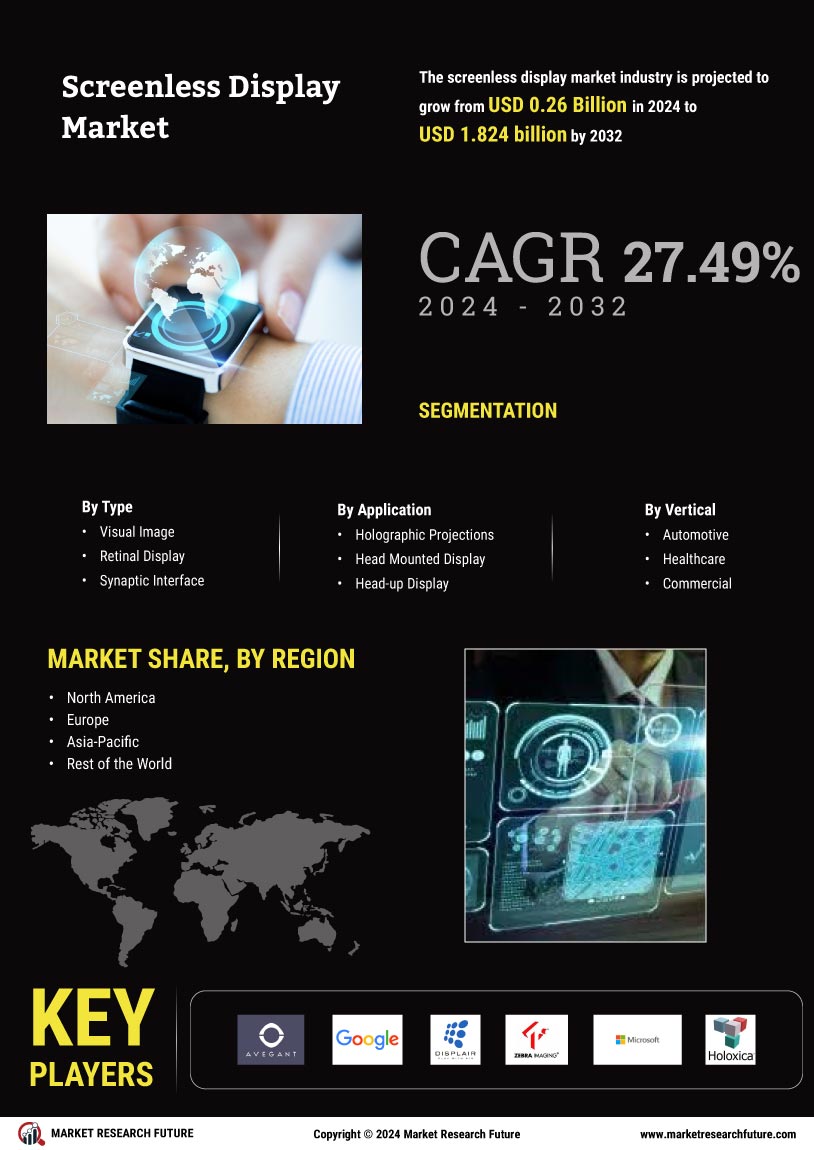Advancements in Technology
The Screenless Display Market is experiencing rapid advancements in technology, particularly in the fields of holography and retinal projection. These innovations enable the creation of immersive visual experiences without the need for traditional screens. For instance, the market for holographic displays is projected to reach USD 4.5 billion by 2026, indicating a robust growth trajectory. As technology continues to evolve, the demand for screenless displays is likely to increase, driven by consumer preferences for more interactive and engaging content. Furthermore, the integration of artificial intelligence in display technologies may enhance user experiences, making the Screenless Display Market more appealing to various sectors, including entertainment and education.
Increased Adoption in Education
The Screenless Display Market is benefiting from increased adoption in educational settings. As institutions seek to enhance learning experiences, screenless displays provide innovative solutions that facilitate interactive learning. For example, the use of augmented reality in classrooms has been shown to improve student engagement and retention rates. The education technology market is projected to grow to USD 350 billion by 2025, with screenless displays playing a pivotal role in this transformation. This trend indicates that the Screenless Display Market may continue to expand as educational institutions increasingly integrate advanced display technologies into their curricula.
Emerging Applications in Healthcare
The Screenless Display Market is poised for growth due to emerging applications in the healthcare sector. Medical professionals are increasingly utilizing screenless display technologies for training, diagnostics, and patient engagement. For instance, augmented reality can assist surgeons during operations by overlaying critical information directly onto their field of view. The healthcare technology market is projected to reach USD 500 billion by 2025, with screenless displays likely playing a crucial role in this expansion. This trend indicates that the Screenless Display Market may experience significant growth as healthcare providers adopt these innovative technologies to improve patient outcomes.
Growing Interest in Wearable Technology
The Screenless Display Market is also influenced by the growing interest in wearable technology. Devices such as smart glasses and head-mounted displays are gaining traction among consumers, driven by their potential to deliver information seamlessly without traditional screens. The wearable technology market is expected to reach USD 60 billion by 2025, suggesting a favorable environment for screenless display innovations. As consumers become more health-conscious and tech-savvy, the demand for wearable devices that utilize screenless display technology may increase, further propelling the Screenless Display Market forward.
Rising Demand in Gaming and Entertainment
The Screenless Display Market is witnessing a surge in demand from the gaming and entertainment sectors. As consumers seek more immersive experiences, screenless displays offer unique solutions that enhance gameplay and storytelling. The gaming industry alone is expected to reach USD 200 billion by 2025, with a significant portion of this growth attributed to innovative display technologies. Screenless displays, such as virtual reality headsets and augmented reality systems, are becoming increasingly popular among gamers. This trend suggests that the Screenless Display Market could see substantial growth as developers and manufacturers focus on creating products that cater to this evolving consumer demand.

















Leave a Comment